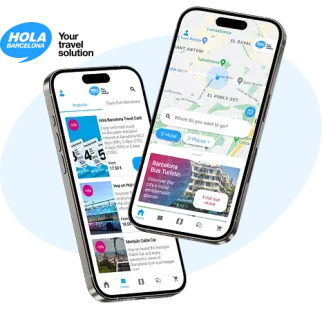Old Born Market. Born Cultural and Memorial Centre
An archaeological journey through the history of Barcelona
Located in a former market, one of the most notable examples of iron architecture in Barcelona, this building hides an important modern-age archaeological site.
In what was once the Born market, you will discover the history of Barcelona and the Ribera neighborhood, which was demolished by King Philip V after the War of Succession.
If you want to visit the Born Cultural Center, take a look at the different itineraries they offer—some focus on the history of the Ribera neighborhood, the taverns and inns of the 1700s, or the nightlife of the neighborhood, among others.

Barcelona Bus Turístic, on the Hola Barcelona app
Your app for visiting the city with the Barcelona Bus Turístic: routes, stops and the most iconic places. A comfortable way to carry your tickets too!
A walk through medieval Barcelona ruins, hidden beneath a market
The Born Cultural Center is located in the former market of the Born neighborhood, the first major iron-architecture building in Barcelona and, along with the Sant Antoni Market, the most architecturally significant in the city.
Beneath the site of the old market, the remains of the medieval and modern city were discovered in 2002—an exceptional archaeological site due to its state of preservation and dimensions. Visitors can see remains of 42 streets and 60 homes that were once part of the Ribera neighborhood, which King Philip V demolished to build the military fortress of the Ciutadella after the War of 1714.
Now, after excavation, restoration, and museum conservation work, the old market B
Discover how the neighborhood was transformed during the war of the 18th century and even observe the cannonballs that Philip V’s army fired at the city.
How to get to the Born Cultural Center?
With the Red Route of the Barcelona Tourist Bus, you can reach the Pla de Palau – Parc de la Ciutadella stop, from where you can walk to the former Born market.
For the curious ones
- Among the discoveries found in the old market are elements from the Roman era, such as a villa and an imperial necropolis. There are also remains from the Middle Ages that allow visitors to follow the construction of the Rec Comtal from the 10th century and the urbanization and expansion of the Ribera neighborhood between the 13th and 16th centuries.
- The building was designed by Josep Fontserè i Mestre and built between 1874 and 1876. It is a rectangular market with two large naves with domes at the intersections and four smaller naves.










